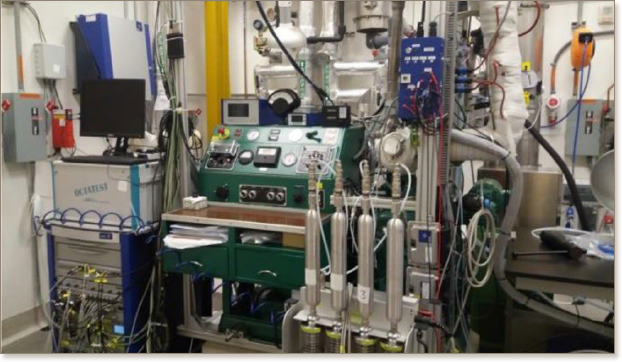Blending octane number of toluene with gasoline-like and PRF fuels in HCCI combustion mode


Future internal combustion engines demand higher efficiency but progression towards this is limited by the phenomenon called knock. A possible solution for reaching high efficiency is Octane-on-Demand (OoD), which allows to customize the antiknock quality of a fuel through blending of high-octane fuel with a low octane fuel. Previous studies on Octane-on-Demand highlighted efficiency benefits depending on the combination of low octane fuel with high octane booster. The author recently published works with ethanol and methanol as high-octane fuels. The results of this work showed that the composition and octane number of the low octane fuel is significant for the blending octane number of both ethanol and methanol. This work focuses on toluene as the high octane fuel (RON 120). Aromatics offers anti-knock quality and with high octane number than alcohols, this work will address if toluene can provide higher octane enhancement. Our aim is to investigate the impact of three gasoline-like fuels and two Primary Reference Fuels (PRFs). More specifically, fuels are FACE (Fuels for Advanced Combustion Engines) I, FACE J, FACE A, PRF 70 and PRF 84. A CFR engine was used to conduct the experiments in HCCI mode. For this combustion mode, the engine operated at four specific conditions based on RON and MON conditions. The octane numbers corresponding to four HCCI numbers were obtained for toluene concentration of 0, 2, 5, 10, 15 and 20%. Results show that the blending octane number of toluene varies non-linearly and linearly with the increase in toluene concentration depending on the base fuel, experimental conditions and the concentration of toluene. As a result, the blending octane number can range from close to 150 with a small fraction of toluene to a number closer to that of toluene, 120, with larger fractions.
DOI: 10.4271/2018-01-1246

"KAUST shall be a beacon for peace, hope and reconciliation, and shall serve the people of the Kingdom and the world."
King Abdullah bin Abdulaziz Al Saud, 1924 – 2015
Thuwal 23955-6900, Kingdom of Saudi Arabia
© King Abdullah University of Science and Technology. All rights reserved